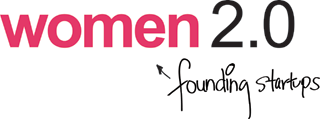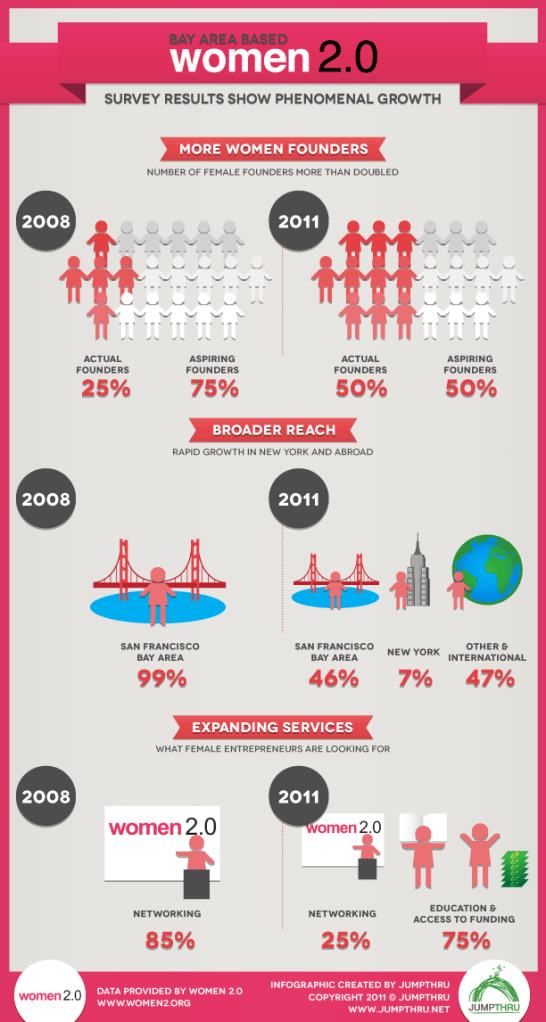Women 2.0, an organization whose goal is to increase the number of female founders in technology startups, is sharing some good news today: the number of women starting companies has doubled over the past three years. The new data comes from a survey of its own community, which includes everyone from actual founders and co-founders to aspiring entrepreneurs.
Back in 2008, Women 2.0 ran the same audience survey and found that 25% of its community were women founders. Today, more than 50% of its audience can now say the same.
Granted, only polling the audience of a women-focused technology community isn’t going to give you the same hard data as you would find if you took a broad sampling of the startup community as a whole and looked for changes over time. However, it likely does indicate that many of those 2008 respondents who claimed to be “thinking about entrepreneurship” actually followed through and launched their own companies. And that, in and of itself, should serve as solid inspiration for women entrepreneurs.
Another change from the previous survey to today’s is the location of the Women 2.0 audience. In 2008, nearly 100% of the community was based in the San Francisco Bay area. Now, the Bay Area accounts for 46%, while New York is 7% and the remaining members (which includes international members) accounts for 47% of the audience.
Women 2.0 says it has grown over the years as its audience matured. Three years ago, 85% of the community was only interested in events. Now, 25% are interested in events and the rest are interested in education around entrepreneurship and access to funding.
The organization also announced that the Kauffman Foundation is providing Women 2.0 with a second round of corporate sponsorship.. The corporate sponsorship will help Women 2.0 expand its educational resources via its online site and its global networking events like Founder Friday.
Correction: Originally, Women 2.0 wrote to us stating that the number of women exiting or getting funding has not yet changed significantly, however they later followed up to report that they had not actually polled on this question. For that reason, we removed reference to that particular result from our report.

